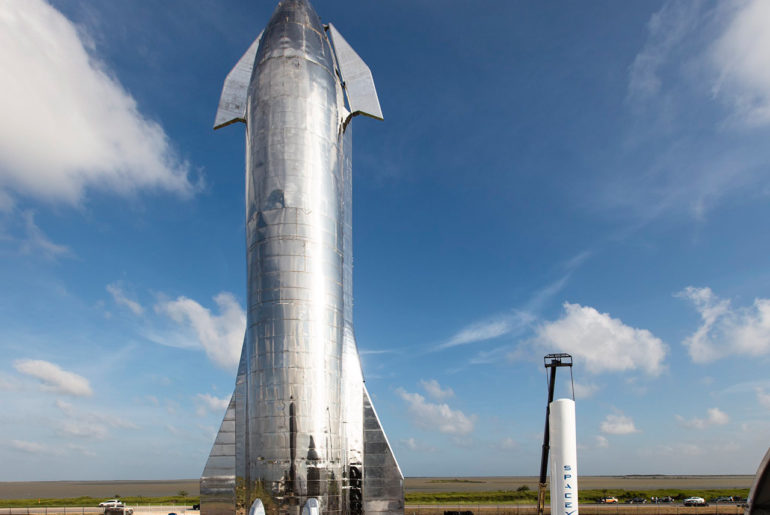
Photo credit: Elon Musk
Elon Musk announced that Starship prototype SN4 successfully passed a cryogenics test on Sunday at a SpaceX site in Texas. This is a milestone for the project as it will eventually send payload to the Red Planet. It also marks the first full-scale Starship prototype to pass this critical test involving filling the ship with liquid nitrogen to ensure it’s capable of surviving in-flight pressure conditions.

SpaceX and NASA originally planned the launch of a Falcon 9 rocket Saturday morning on a short, but necessary, flight to prove the company’s Crew Dragon astronaut ferry ship can quickly propel a crew to safety in the event of a catastrophic booster failure. Unfortunately, the Falcon 9 rocket, featuring a thrice-flown first stage and a fueled but engine-less second stage, is expected to be destroyed during the event, which has been delayed to Sunday morning due to poor weather.

SpaceX announced that it has now successfully completed 13 consecutive successful tests of their Mark 3 parachute design, developed in cooperation with Airborne System, for the Crew Dragon spacecraft after fixing a few initial problems. This parachute system is crucial because it’s the same one that will be eventually responsible for bringing astronauts safely back down to Earth.

Photo credit: SpaceX
Elon Musk held a press event yesterday at SpaceX’s South Texas test site to provide an update on Starship. The CEO stood beneath a towering Starship Mk1 prototype currently being used to develop a massive reusable launch system. This new version, along with its Super Heavy booster, is capable of transporting up to 100 people to the moon, Mars, and beyond. The rocket stands 387-feet-tall and is completely reusable, with quick turnaround times.

Photo credit: Elon Musk
Elon Musk posted new images of SpaceX’s its space-bound orbital prototype to be used on the next-generation Starship spacecraft located on the Texas site. The images show the rotation of a large circular, dome-shaped bulkhead (30-feet in diameter) before its installation. As you can see, the bulkhead makes up the interior structure of Starship, dividing it into compartments.





